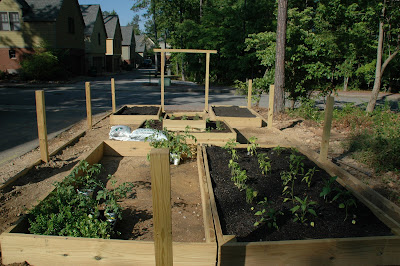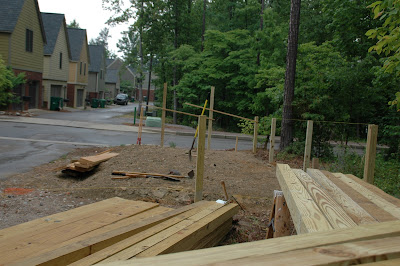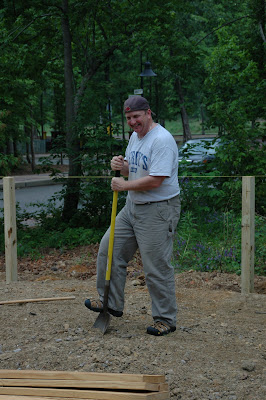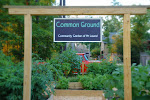“Common Ground”… it’s a phrase that appeals to everyone. It suggests a place where we all get along, and partake willingly from it’s inherent bounty. That’s the idea behind the new Community Garden at Mt Laurel. It’s there for everyone’s enjoyment and benefit, it belongs 100% to every resident, and 0 % to any individual – and soon the harvest will begin and the fruits borne from this “Common Ground” will spread their message throughout the town.
The idea of a Community Garden was first contemplated in the winter of 2004, when a small group of 10 people got together to discuss ideas for a garden that all of Mt Laurel could share in and enjoy, one which everyone could both learn and harvest from. The families Stone, Jackson, Thompson, Brush, and Tickle put their collective heads together and came up with a plan. However, as is often the case, life got in the way… one family moved, some babies came, and the plan was put on the shelf. However, the spark remained.
On one cold November day of 2006, the spark flickered. Chris and Scott Stone were looking out the window of their library, pondering a variety of subjects, and the topic of the garden was resurrected. Many things were debated - possible locations , obstacles that had to be overcome, resources needed, whether the garden would be accepted by the town, was there enough sunlight, would future development create problems, what would be planted, who would harvest and maintain, how would irrigation be provided … the list grew and grew, but the progress was undeniable. In March 2007, Alabama experienced an early taste of spring, and the spark became a flame –others were becoming interested. Kelley Burley voiced an interest in a community garden to Rip Weaver, Town Landscape Architect. Rip referred Kelley to the Stones, and a commitment was made to bring the 3 year old idea to fruition.
First, a location had to be selected. It had to be one which allowed for full sunlight, required minor modifications, provided easy access to water, was visible and accessible to the residents, and one which was not the near term target for development. Once a site was selected, it was presented to John Freeman and Rip Weaver – who gave their full endorsement of the project. The garden would be built on Abbot, between Olmsted and Hawthorn.
From there, things began to move quickly – a site layout was developed by Chris Stone, Mt Laurel provided the site prep and fill dirt, and a list of materials needed to build the garden was developed.
It was determined early on that we would adhere to the following guidelines:
- All planting would exist in wooden raised beds filled with 2/3 topsoil and 1/3 organic matter.
- We would use organic and pesticide free measures whenever possible.
- We would plant for the benefit of everyone in Mt Laurel, regardless of who contributed the efforts to grow the crops or construct the garden.
- The beds will be kept neat and weed free. All residents would be encouraged to assist in this endeavor.
- We would focus our plantings on items which had a high ratio of yield to space requirement (e.g. tomatoes rather than string beans, squash rather than melons)
In early May, the site prep was complete, building materials were delivered, and construction of the garden began in earnest. As this took place, people around the town were taking notice – questions about what was happening, interest in the Garden, and volunteers to assist were all the topics of emails within the town. With construction led by the Stones, many people provided their efforts as well. Scott Prescott, David Brush, Miles Brush, and Jon Thompson were among the early contributors – soon to be followed by Wilson Parker, Cade Kuykendal, Bob Kuykendal, and Davis Parker. Working on weekends and after work, the construction progressed smartly, and soon beds were built, staked, and planted. Tomatoes, squash, peppers, okra, basil, thyme, parsley, purple sage, and cilantro all were among the first plantings. A “Kids Garden” was also built, where the young gardeners of Mt laurel will be encouraged to plant seeds of their choice and watch them grow.
While much work remains before the garden is complete (installation of fencing, construction and installation of gate), talk has already begun about fall planting and a pumpkin growing contest. While we look to the future of our nascent garden, it’s important that we recognize the efforts of the original 10 “founders” of the garden, as well as John Freeman and Rip Weaver – all of whose efforts and willingness to make this a reality were essential to the progress thus far.
Clearly, the future of the Mt Laurel Community Garden is bright – and the formation of something special… another piece of “Common Ground, has taken place.














